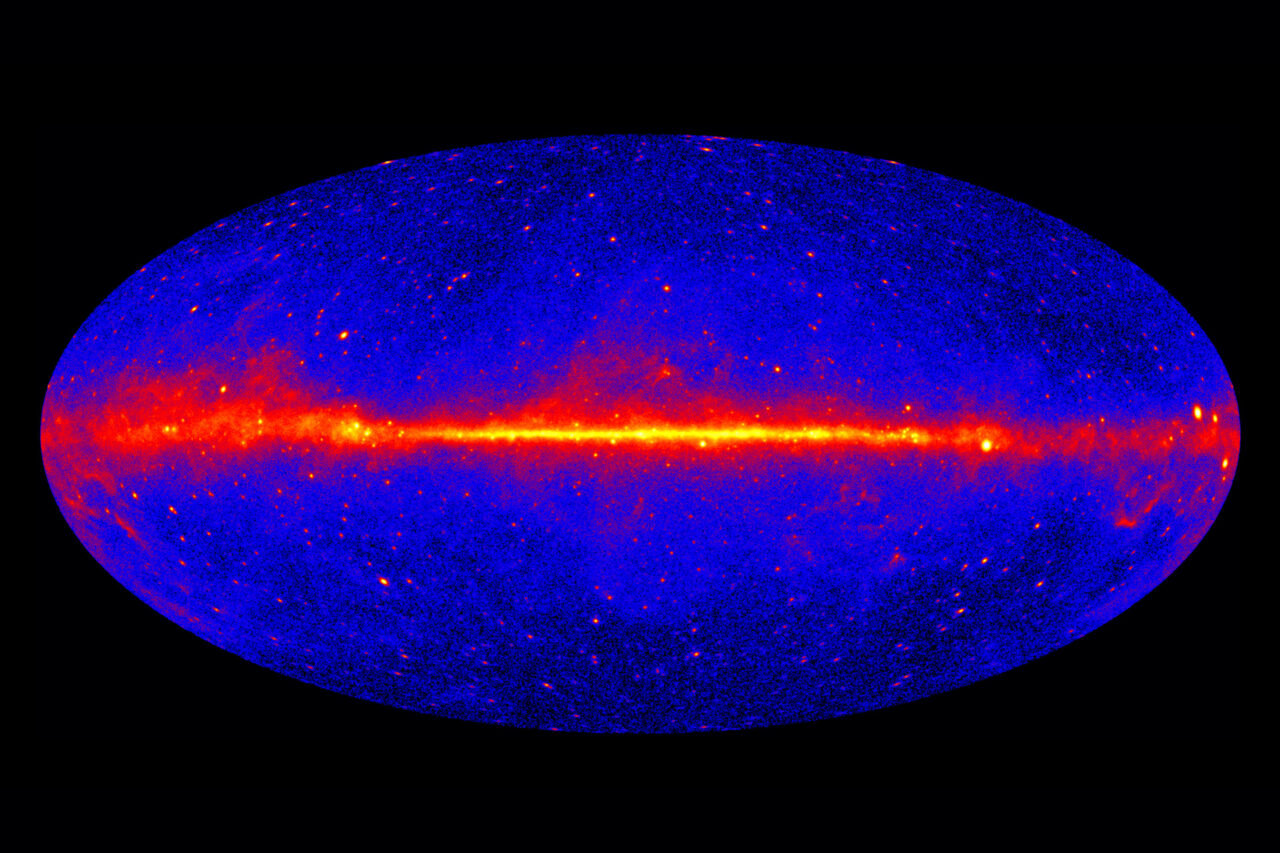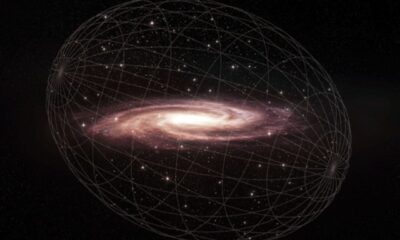Science
Astronomers Explore Gamma Ray Mystery in Milky Way’s Core

Astronomers have recently proposed a new explanation for a puzzling concentration of gamma rays emanating from the center of the Milky Way galaxy. A study published in Physical Review Letters suggests that these high-energy emissions may originate from neutron stars, rather than the previously considered sources. If this hypothesis proves accurate, it could provide the “first proof” of dark matter, a substance that constitutes approximately 85% of the universe’s mass yet remains largely undetectable.
The Fermi Gamma-ray Space Telescope first detected excess gamma rays in 2009, sparking numerous theories about their origin. While some researchers attributed the emissions to energetic stars or potential instrumental errors, the new study posits that they could stem from dark matter particle collisions. This connection is critical, as dark matter plays a fundamental role in holding galaxies together, according to Joseph Silk, an astrophysicist at Johns Hopkins University and co-author of the study.
New Insights into Dark Matter
The researchers conducted simulations tracing the evolution of the Milky Way, testing various scenarios to explain the gamma-ray phenomenon. They suggest that if the emissions are indeed linked to dark matter, it would reinforce existing theories about its existence, especially in light of the lack of direct detection in numerous underground experiments. Silk emphasized the significance of this research, stating, “Dark matter dominates the universe and holds galaxies together. It’s extremely consequential, and we’re desperately thinking all the time of ideas as to how we could detect it.”
Although previous research has hinted at a relationship between the Milky Way’s gamma rays and dark matter, the latest findings provide a more robust theoretical framework. The study highlights the importance of ongoing investigations, particularly in the context of upcoming advancements in gamma-ray observation technology.
Future Research Directions
While the new model shows promise, it is not definitive proof of dark matter. The researchers acknowledged that their simulations also produced reasonable results when accounting for fast-spinning neutron stars, known as millisecond pulsars. However, this scenario relies on assumptions regarding the number of these light sources, which may exceed current observational confirmations.
Looking ahead, the research team intends to further their studies in anticipation of the activation of the Cherenkov Telescope Array, a next-generation facility designed for gamma-ray observations. Silk expressed optimism about the potential impact of new data, stating, “It’s possible we will see the new data and confirm one theory over the other. Or maybe we’ll find nothing, in which case it’ll be an even greater mystery to resolve.”
As astronomers continue to explore the elusive nature of dark matter, each discovery brings them closer to unraveling the complexities of our galaxy and the universe at large.
-

 Technology5 months ago
Technology5 months agoDiscover the Top 10 Calorie Counting Apps of 2025
-

 Health2 months ago
Health2 months agoBella Hadid Shares Health Update After Treatment for Lyme Disease
-

 Health3 months ago
Health3 months agoErin Bates Shares Recovery Update Following Sepsis Complications
-

 Technology4 months ago
Technology4 months agoDiscover How to Reverse Image Search Using ChatGPT Effortlessly
-

 Technology1 month ago
Technology1 month agoDiscover 2025’s Top GPUs for Exceptional 4K Gaming Performance
-

 Technology2 months ago
Technology2 months agoElectric Moto Influencer Surronster Arrested in Tijuana
-

 Technology5 months ago
Technology5 months agoMeta Initiates $60B AI Data Center Expansion, Starting in Ohio
-

 Technology5 months ago
Technology5 months agoRecovering a Suspended TikTok Account: A Step-by-Step Guide
-

 Health4 months ago
Health4 months agoTested: Rab Firewall Mountain Jacket Survives Harsh Conditions
-

 Lifestyle5 months ago
Lifestyle5 months agoBelton Family Reunites After Daughter Survives Hill Country Floods
-

 Technology4 months ago
Technology4 months agoHarmonic Launches AI Chatbot App to Transform Mathematical Reasoning
-

 Technology3 months ago
Technology3 months agoUncovering the Top Five Most Challenging Motorcycles to Ride





















